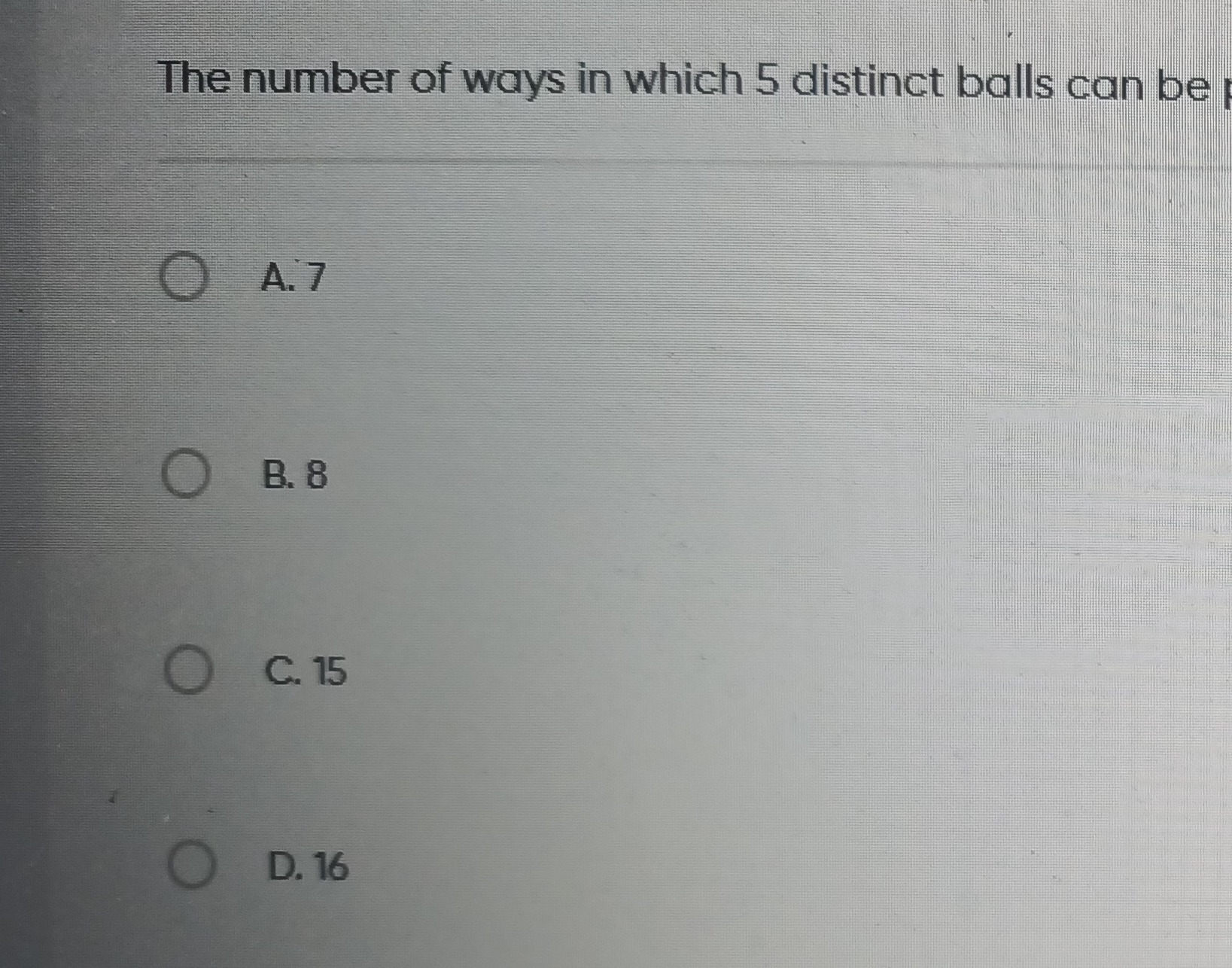Question
Question: The number of ways in which 5 distinct balls can be partitioned into exactly 2 non-empty subsets is...
The number of ways in which 5 distinct balls can be partitioned into exactly 2 non-empty subsets is

7
8
15
16
15
Solution
This problem asks for the number of ways to partition 5 distinct balls into exactly 2 non-empty subsets. This is a classic problem solved using Stirling numbers of the second kind, denoted as S(n,k), where n is the number of distinct objects and k is the number of non-empty subsets.
We need to calculate S(5,2). The formula for Stirling numbers of the second kind is: S(n,k)=k!1∑j=0k(−1)k−j(jk)jn
For S(5,2): S(5,2)=2!1((−1)2−0(02)05+(−1)2−1(12)15+(−1)2−2(22)25) S(5,2)=21((1)(1)(0)+(−1)(2)(1)+(1)(1)(32)) S(5,2)=21(0−2+32) S(5,2)=230=15
Alternatively, we can consider the ways to form two pairs from 5 distinct balls. This implies one ball will be left alone. The number of ways to choose the first pair is (25). The number of ways to choose the second pair from the remaining 3 balls is (23). Since the order of the two pairs does not matter, we divide by 2!. Number of ways = 2!(25)(23)=210×3=15.
Both interpretations lead to 15.
